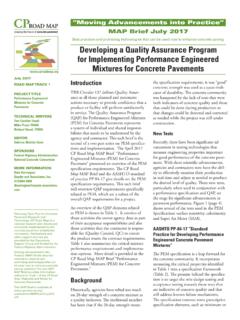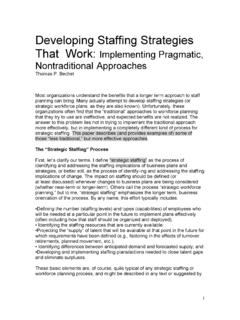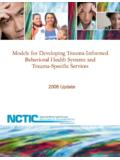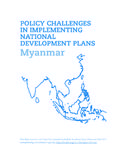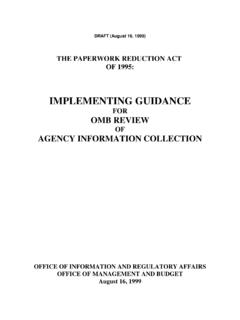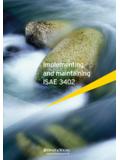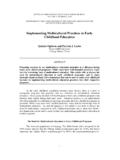Transcription of Hoshin Kanri: Implementing the Catchball Process
1 Long range planningLong Range Planning 34 (2001) kanri : Implementingthe Catchball ProcessCharles Tennant and Paul RobertsInvolving employees in strategy deployment is an active topic of strategicmanagement, but has been difficult to achieve in western companies. Themethodology known as Hoshin kanri has proved an effective strategy deploymentprocess in Japan where it has been extensively applied for integrating strategy andTotal Quality Management (TQM), but its adoption in the West has been low, exceptfor a few innovatory companies. The application of Hoshin kanri relies on a processcalled Catchball to gain consensus on the deployment of Hoshin targets andmeasures in a team environment.
2 This paper presents a Process design based on anadaptation of the Delphi technique for the effective implementation of Catchball , toreinforce the link between the corporate strategy and annual planning cycle. Thecatchball Process described was implemented at the Rover Group, a UK-basedautomotive company, to develop the company s quality strategy based on Hoshin Kanriprinciples. c 2001 Elsevier Science Ltd. All rights of the current active topics in strategic management is theinvolvement of employees in the strategy deployment stages ofthe Process , particularly in western companies, which havestruggled with the concept of relating top management goals tothe daily work of employees.
3 It is preferable if the top manage-ment goals are integrated through the formulation and develop-ment of policies and, by the involvement of a wider group ofmanagers through consensus. This should enable a higher levelof buy-in to the goals, improved understanding of the enablersto achieving them, and the motivation to communicate theminto practical daily work processes. However, this has proved tobe a difficult Process for western Japanese companies have already established an effectivestrategy deployment Process , known as Hoshin kanri , whichattempts to integrate top management goals into daily oper-0024-6301/01/$ - see front matter c 2001 Elsevier Science Ltd.
4 All rights : S 0024-6301(01)00039-5Dr Charles Tennant is PrincipalFellow, Quality and Reliability,in the Warwick ManufacturingGroup, School of Engineering,University of Warwick. Hecommenced his career as anengineering apprentice atMatrix Churchill Machine Tools,and obtained a BSc (Hons)engineering degree fromCoventry (Lanchester)Polytechnic in 1985. He wasemployed at the automotivecompany Rover Group from1985 to 1999, during whichtime he worked in PowertrainEngineering, Manufacturing,Group Quality and latterly asChief Engineer of Land Rover4 4 vehicles. He was awardedan MSc degree inManufacturing SystemsEngineering in 1990 and anEngineering Doctorate in 1998from the University of doctoral project was Developing a Company WideQuality Strategy in theAutomotive Business.
5 Heisaregistered Chartered Engineer,and Fellow of the Institute ofMechanical Engineers. AtWarwick Manufacturing Grouphe specialises in strategicquality management and newproduct introduction processapplications. Correspondingaddress: WarwickManufacturing Group,University of Warwick, Qualityand Reliability School ofEngineering, Coventry, CV47AL, UK. A. B. Roberts is PrincipalFellow, Quality and Reliability,in the Warwick ManufacturingGroup, School of Engineering,University of Warwick. He wasemployed in the Royal AirForce from 1969 to 1990 in awide number of engineeringroles that included newproduct introduction anddevelopment of aerospaceequipment.
6 He now heads ateam of specialists in qualityand reliability who lecture onpostgraduate programmes inthe UK and six countriesoverseas. In addition tolecturing and supervisingmasters and doctoral studentshe provides consultancysupport for partner companiesof Warwick ManufacturingHoshin technique was originally developed in Japan fromthe concept ofManagement by Objectives, and has been the sub-ject of many English translations, which although similar, cancause confusion in interpretation. The various translationsinclude policy deployment, policy control and management by pol-icy . This paper does not intend to provide a full description ofHoshin kanri other than a brief overview.
7 Instead, it exploresareas of difficulty for Implementing the Process in western com-panies. A particularly difficult phase of Hoshin kanri is in theimplementation of a Process known as Catchball , which is usedto gain consensus on the deployment of Hoshin targets and mea-sures, in a team environment known as cross-functional manage-ment . The difficulties are explored, and a Process is presentedthat was developed for and applied at the Rover Group, a UK-based automotive company, to develop the company s qualitystrategy based on Hoshin kanri planning issuesCorporate strategy is concerned with the direction a companytakes over time and with the use of its available resources; wherethe best strategy for a company depends on current levels ofperformance, particular strengths and weaknesses, and theopportunities or threats in its particular environment.
8 Someground rules for strategic planning are summarised as Targets must be challenging but realistic so as to discouragecomplacency; Input from management must be encouraged; Effective planning normally involves iteration; Take a balanced and realistic view; Commit sufficient time and thought to the is preferable that the line management who is to drive theplanning Process also helps evolve it, with a stronger focus onthe most important issues, and a greater emphasis on implemen-tation. Also, it is necessary to determine whether the strategicplanning Process will trim ambitions to match the availableresources, or to leverage resources to reach seemingly unattain-able goals, which has been previously termedStrategic ascendance of Japanese companies has been seen as evidencethat western techniques for strategic planning have often failed,where the former have tended to focus on quality, productivityand teamwork rather than complex planning strategic planning Process is an important enabler forperformance improvement in dynamic and complex industries.
9 But performance can be even higher when managers are author-ised to make autonomous decisions and learn from particular approach for enabling the strategic planning pro-cess has been the adoption ofStrategic Business Process Manage-ment, which requires the organisation to be conceptualised as aseries of business a fundamental question is whatshould organisations do once they have developed a Process -based architecture to ensure that the business Process review doesnot merely lead to a list of several dozen processes with littlefurther development? The crucial point is not the basic questionsrelating to strategic planning, but rather the techniques andorganisational approaches which companies have traditionallyused to answer them.
10 Therefore, to be effective, strategic plan-ning must use a Process , which is not separated from implemen-tation, and involves a series of regular iterative KanriOverviewHoshin kanri is an organising framework for strategic manage-ment, which is concerned with the following four primary To provide a focus on corporate direction by setting, annually,a few strategic priorities; To align the strategic priorities with local plans and pro-grammes; To integrate the strategic priorities with daily management; To provide a structured review of the progress of the stra-tegic and deployment are critical elements of Hoshin kanri ,which imply that the Process of determining targets, the develop-ment of means to achieve the targets, and the deployment ofboth are crucial for success.
